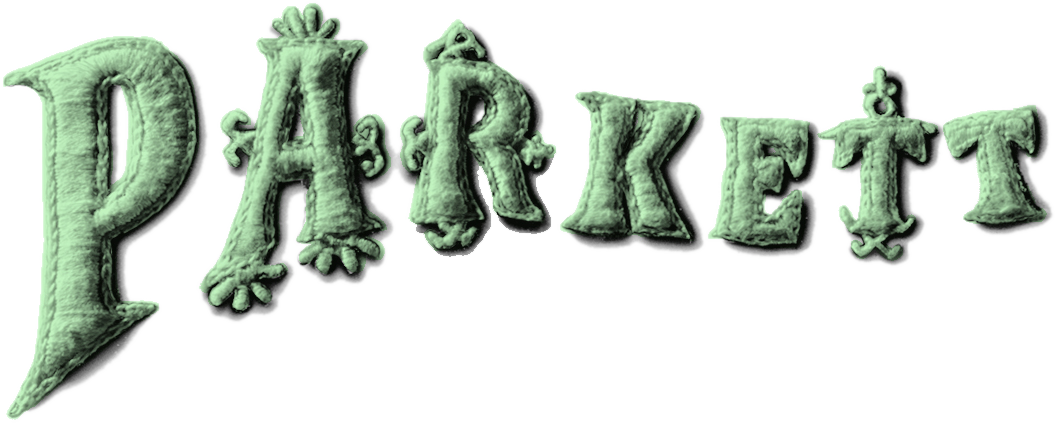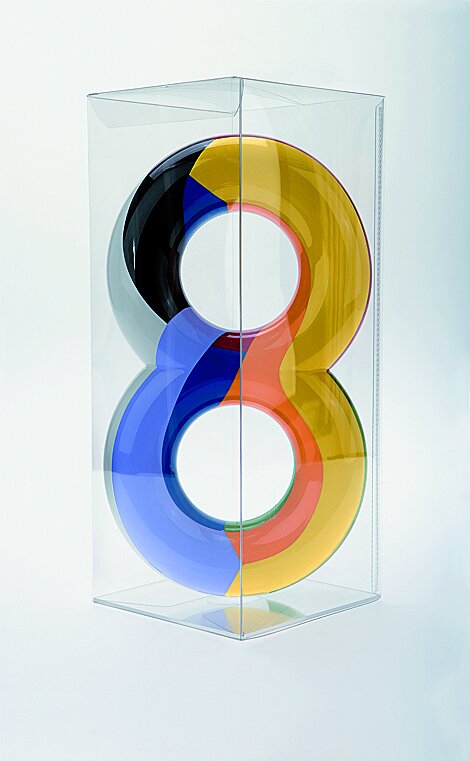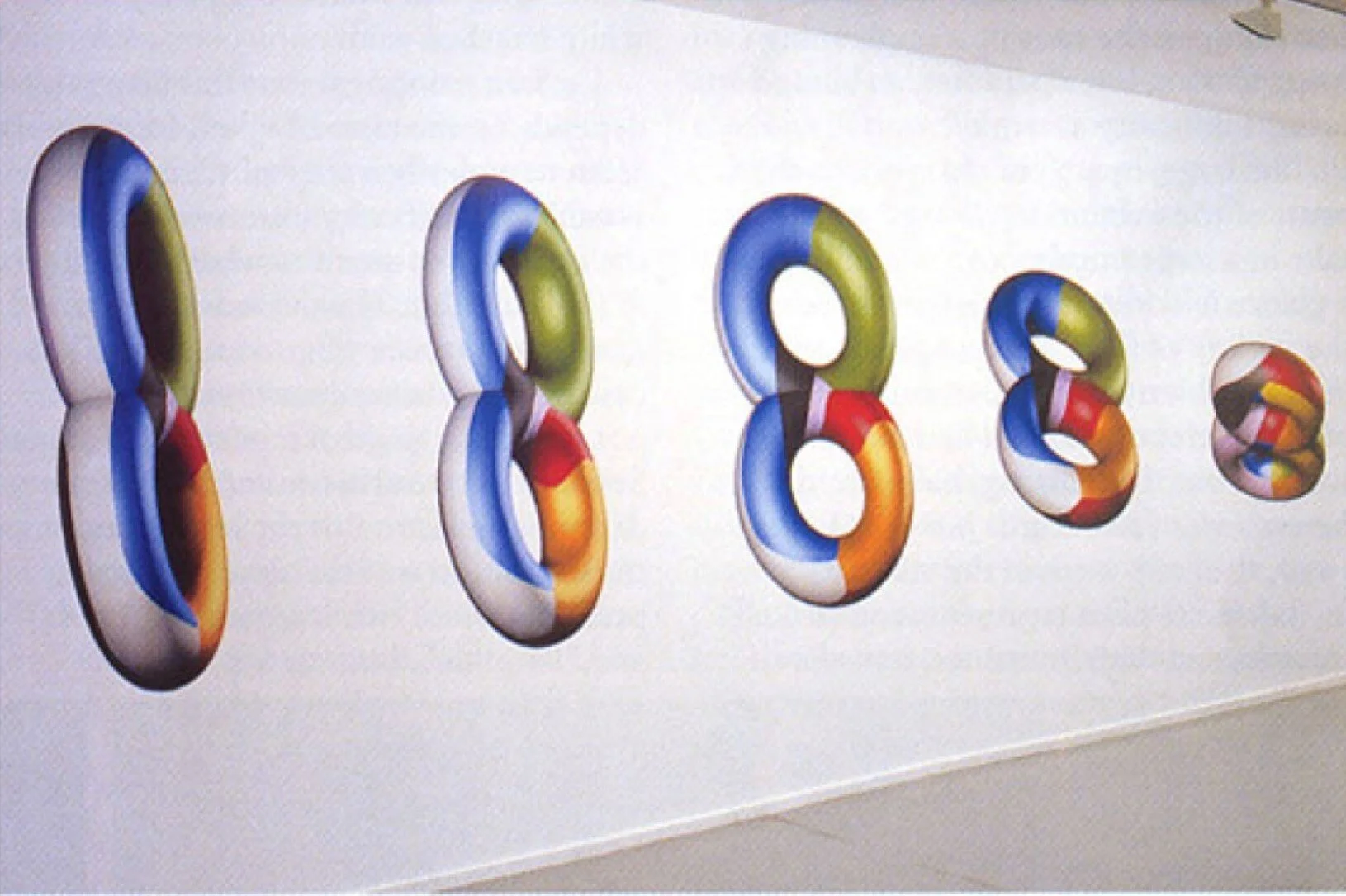Bernard Frize
“What is the greatest number of color fields that can be arranged so that each maintains a border with all others? Bernard Frizes‘s “Percy John Heawood Conjecture” for Parkett 74 (2005) (see image 1) addresses this thorny question. The work’s namesake, British mathematician Percy John Heawood, labored over this and related problems (which originated in cartography) in the years surrounding the turn of the last century. At one point, exploring three-dimensional forms, he determined that no more than eight fields of color can abut one another on the surface of a double torus (a volume shaped, in accidental analogy, exactly like a three-dimensional figure eight). Bernard Frize‘s Heawood is based on this formula.” (Jean-Pierre Criqui).
Bernard Frize noted “I reconstructed this object (i.e. the torus), thinking that it provided a context to my work”.
The following images show various fabrication stages (stereo litho prototype, step by step painting, a larger Heawood version from 1999 and various early 2-D print images)
Bernard Frize’s edition
Parkett Vol. 74






